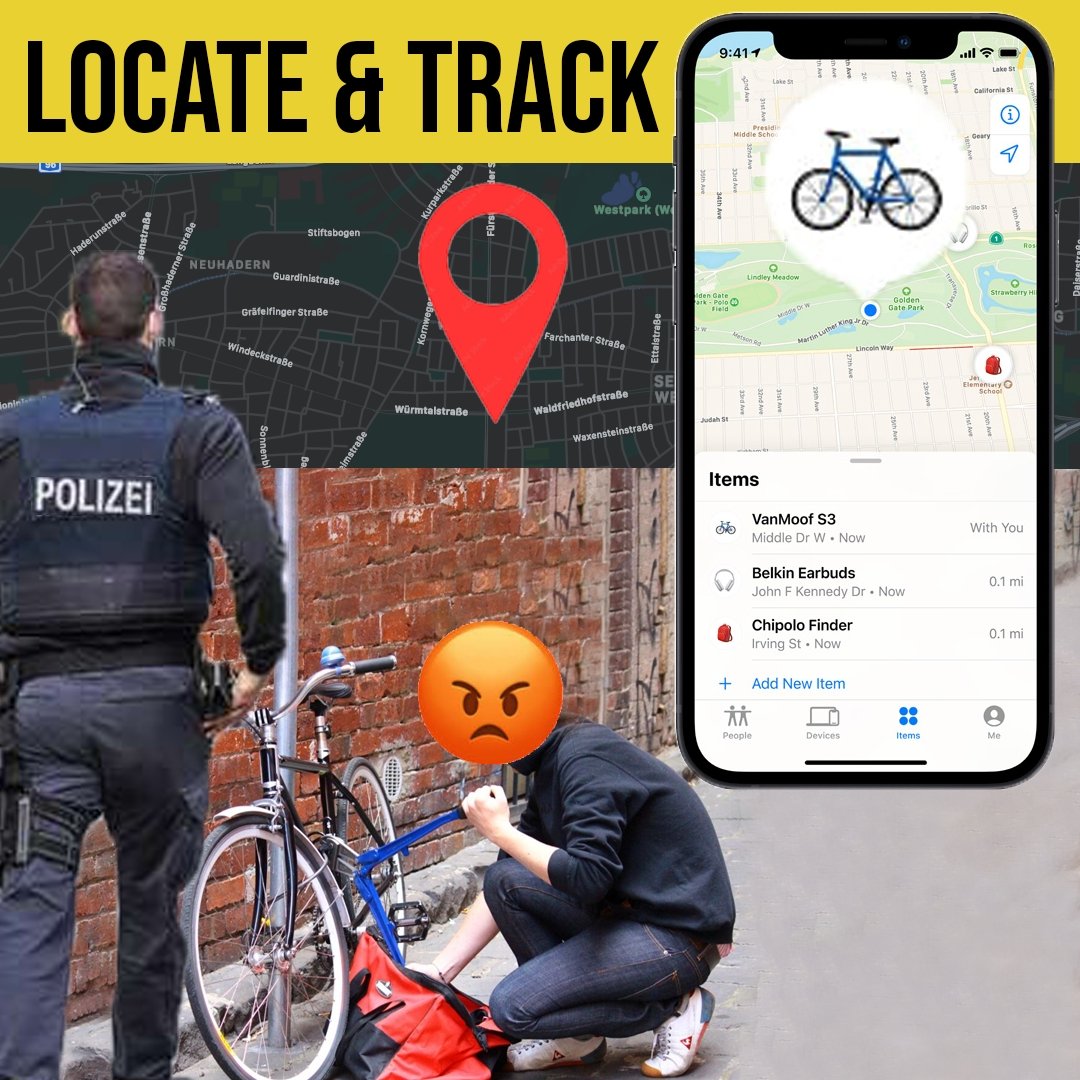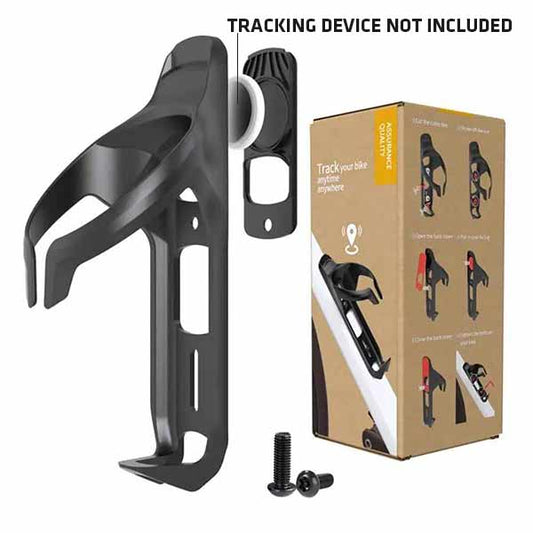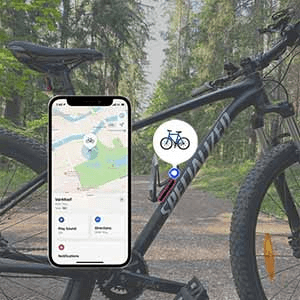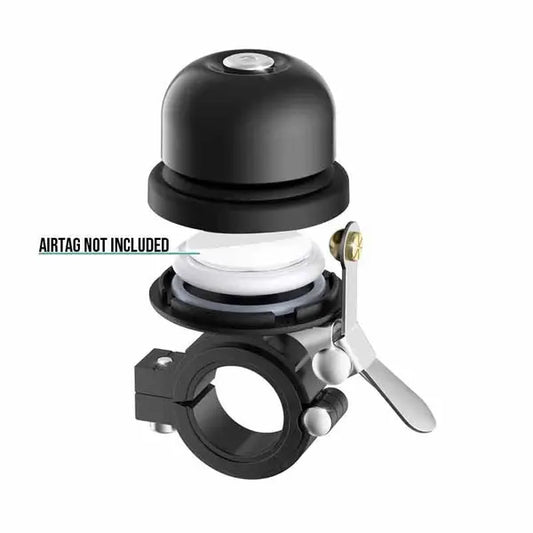Commuting by Bike: How to Make It Safer and More Fun
The rhythmic whir of tires on pavement, the gentle morning breeze against your face, and the satisfaction of bypassing gridlocked traffic—bike commuting offers a unique blend of practicality and pleasure that's attracting more urban dwellers every year.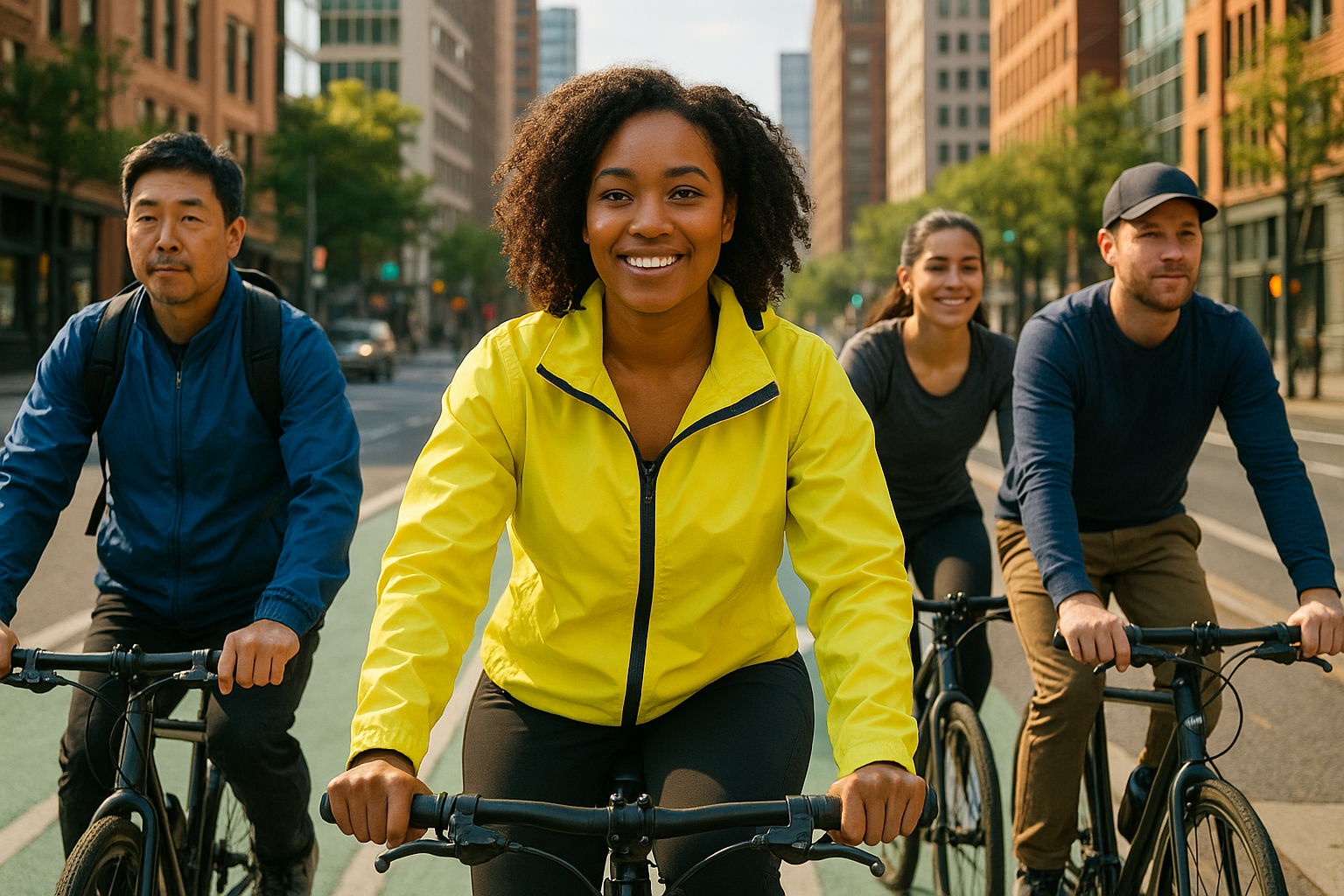
As cities expand bike infrastructure and environmental concerns grow, commuting by bike has evolved from a niche activity to a mainstream transportation option that combines fitness, financial savings, and freedom.
Whether you're contemplating your first ride to work or looking to enhance your existing bike commute, getting the approach right transforms what could be a stressful journey into an energizing daily ritual. Beyond simply pedaling from point A to point B, effective bike commuting involves thoughtful preparation, appropriate gear, and strategies to help protect your bicycle from theft. In this guide, you'll discover how to make your two-wheeled journeys not just safer, but genuinely enjoyable—turning what many consider a chore into the best part of your day.
Preparing for your bike commute: what to know before you ride
Before diving headfirst into bike commuting, taking time for thoughtful preparation will dramatically improve your experience. Starting with realistic expectations helps ensure long-term success rather than short-lived enthusiasm.
Begin by considering your commute distance and terrain. While the average cyclist comfortably manages 10-12 miles each way, your personal fitness level, local topography, and time constraints might suggest a different threshold. Online tools like Google Maps' cycling option, Strava's heatmaps, or specialized apps like Komoot can help visualize potential routes, including elevation changes and dedicated cycling infrastructure.
Weather patterns in your region deserve serious consideration. If you live in a rainy climate, you'll need appropriate gear and possibly fenders. In extremely hot or cold locations, plan for seasonal adjustments to both your route and equipment. Consider conducting a weekend test run of your proposed route when traffic is lighter, giving yourself space to identify hazards, evaluate timings, and adjust expectations before your first official commuting day.
Many successful cycle commuters start with a hybrid approach—perhaps cycling on fair-weather days or combining transit with cycling for longer distances. This gradual introduction builds confidence and allows your body to adapt to the new activity level. Remember that cycle commuting should reduce stress, not add to it, so design a sustainable approach that works for your specific circumstances.
Choosing the right route and bike for your needs
Not all routes are created equal when pedaling to work. While navigation apps might suggest the shortest path, the safest and most enjoyable cycling route often follows a different logic. Prioritize roads with dedicated bike lanes, paths through parks, quieter residential streets, and routes where drivers expect to encounter cyclists. Even if this adds a few minutes to your commute, the stress reduction and safety benefits typically outweigh the time consideration.
Your bicycle choice significantly impacts commuting comfort and efficiency. Here's a quick breakdown of common options:
- Hybrid bikes: The Swiss Army knife of commuting—reasonably fast on pavement while handling occasional rough patches and offering an upright, traffic-visible position.
- Road bikes: Ideal for longer, smoother commutes where speed matters, though typically with fewer attachment points for racks and fenders.
- Mountain bikes: Overkill for most urban commutes but valuable in cities with poor road conditions or where off-road shortcuts make sense.
- Electric bikes: Game-changers for longer distances, hilly terrain, or arriving at work without breaking a sweat—though requiring secure storage due to their higher value.
- Folding bikes: Perfect for multi-modal commutes involving public transit, or for those with limited storage space at home or work.
- Cargo bikes: Specialized options for parents dropping children at school or professionals carrying equipment that wouldn't fit in a standard bag.
For commuting practicality, look for bikes with mounting points for racks, fenders, and lights. Puncture-resistant tires reduce maintenance headaches, while disc brakes provide reliable stopping power in all weather conditions. Consider adding a bottle cage that discreetly secures both your water and an AirTag for hydration and theft protection in one practical upgrade.
Essential safety gear and setup for safe bike commuting
Safety equipment isn't just about compliance—it's about creating a commuting experience where you can focus on enjoyment rather than anxiety. Starting with the fundamentals ensures you're prepared for whatever the journey brings.
A properly fitted helmet tops the safety priority list.
Look for CPSC certification (in the US) or equivalent standards elsewhere, and replace helmets after any significant impact or every 3-5 years as materials degrade. Remember that a helmet should sit level on your head (not tilted back), with the front edge one finger-width above your eyebrows and the straps forming a Y shape around each ear.
Visibility remains the cyclist's superpower.
During daylight hours, bright or contrasting clothing helps you stand out against urban backgrounds. For dawn, dusk, or night riding, reflective elements on clothing, bags, or the bike itself dramatically increase your visual footprint. High-quality lights are non-negotiable: a white front light (at least 200 lumens for city riding, more for unlit paths) and a red rear light visible from at least 500 feet away.
For year-round commuting, invest in layered clothing appropriate to your climate. Moisture-wicking base layers, insulating mid-layers, and waterproof/breathable outer shells create a versatile system adaptable to changing conditions. Specialized cycling clothing offers functional benefits but isn't required—many commuters successfully ride in modified everyday attire with a few strategic adjustments like pant leg straps to prevent chain grease.
Consider carrying gear in panniers (saddlebags) or a rack-mounted trunk bag rather than a backpack when possible. This lowers your center of gravity and reduces back sweat during warmer months. If using a backpack, choose one with reflective elements, a sternum strap for stability, and ventilation channels to minimize perspiration.
Staying visible and alert on urban roads
Urban cycling demands a heightened awareness that becomes second nature with experience. Position yourself confidently in the traffic lane—typically riding about one-third into the lane rather than hugging the curb—making yourself visible and avoiding road edge hazards like drainage grates and debris.
Communication with other road users prevents misunderstandings and potential conflicts. Master basic hand signals for turning and stopping, making them early and deliberately. Make eye contact with drivers at intersections when possible, confirming they've seen you before proceeding. A handlebar-mounted mirror provides valuable awareness of approaching traffic without requiring constant head-turning.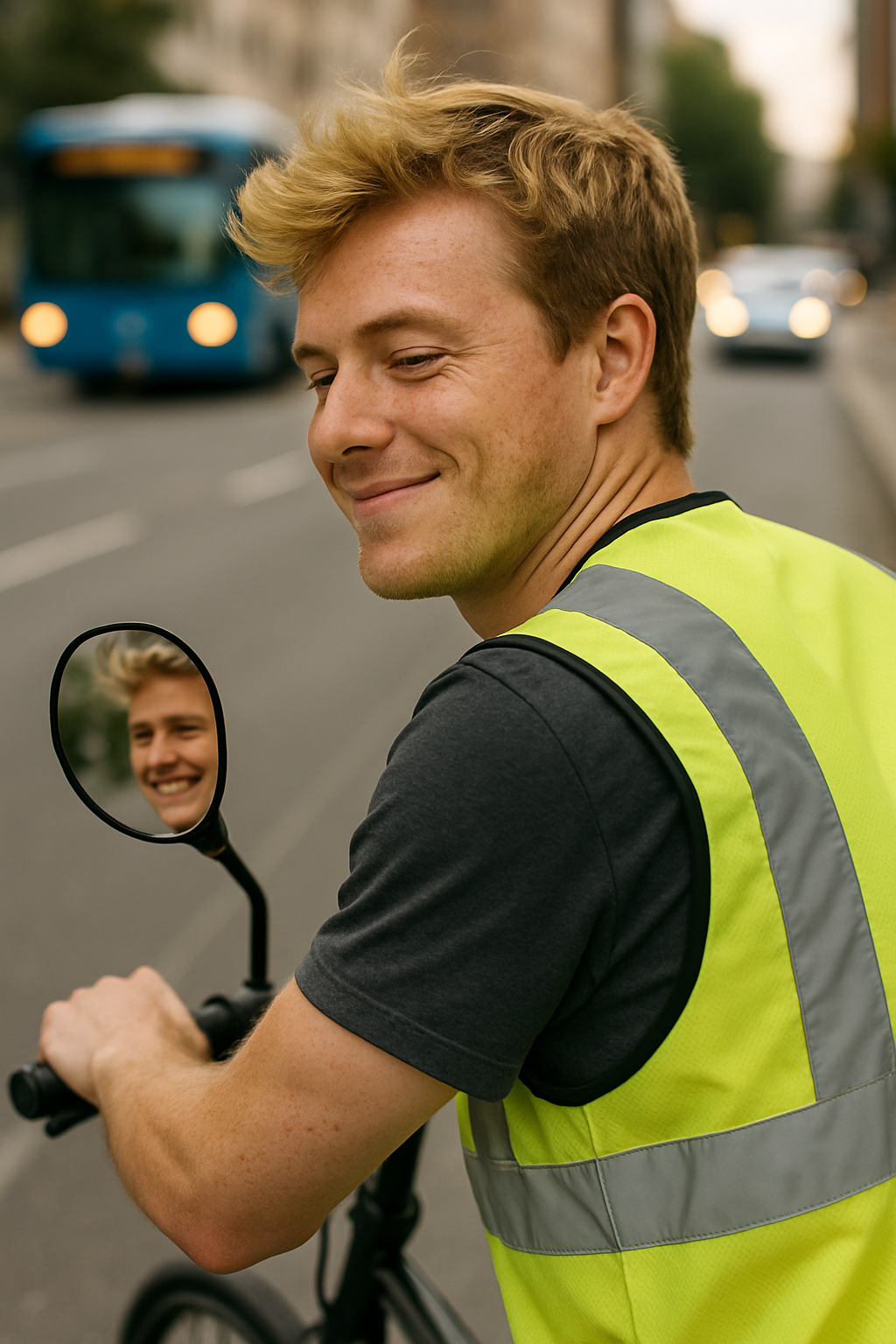
Predictable riding behavior increases your safety margin. Maintain a straight line rather than weaving, and signal intentions well before executing maneuvers. Avoid unexpected movements like darting between parked cars or making abrupt turns without signaling. Ride defensively by anticipating potential hazards—doors opening from parked cars, pedestrians stepping into bike lanes, or vehicles turning across your path.
Audio awareness significantly enhances safety. While riding with music might seem tempting, avoiding headphones keeps your hearing available for approaching vehicles, emergency sirens, or other cyclists announcing passing intentions. If you must have audio, consider bone-conduction headphones that leave ears uncovered, or use just one earbud at very low volume.
Intersections demand particular attention. When stopping at red lights, position yourself where drivers can see you in their mirrors and where you aren't trapped in a right-turn conflict zone. Consider the "box turn" technique for left turns in heavy traffic—proceeding straight through the intersection, then repositioning for a second crossing rather than merging across traffic lanes.
Daily practices: maintenance, repairs, and avoiding mishaps
Routine maintenance transforms from a chore into a ritual when you recognize how directly it impacts riding enjoyment. A well-maintained bike rides more efficiently, breaks down less frequently, and simply feels better beneath you.
Adopt the pre-ride "ABC Quick Check" before each commute: Air (tire pressure), Brakes (function and pad wear), Chain/Cranks (smooth operation and secure attachment), Quick releases (properly closed), and Check over (unusual noises or wobbles). This 60-second inspection catches most developing issues before they become roadside emergencies.
Tire pressure maintenance offers perhaps the best return on invested time. Properly inflated tires roll more efficiently, resist punctures better, and provide appropriate traction. Check pressure weekly at minimum, as even the best tubes gradually lose air. Remember that recommended pressure ranges printed on tire sidewalls are guidelines—heavier riders generally need higher pressures, while lower pressures within the recommended range provide more comfort on rough surfaces.
Chain care extends drivetrain life substantially.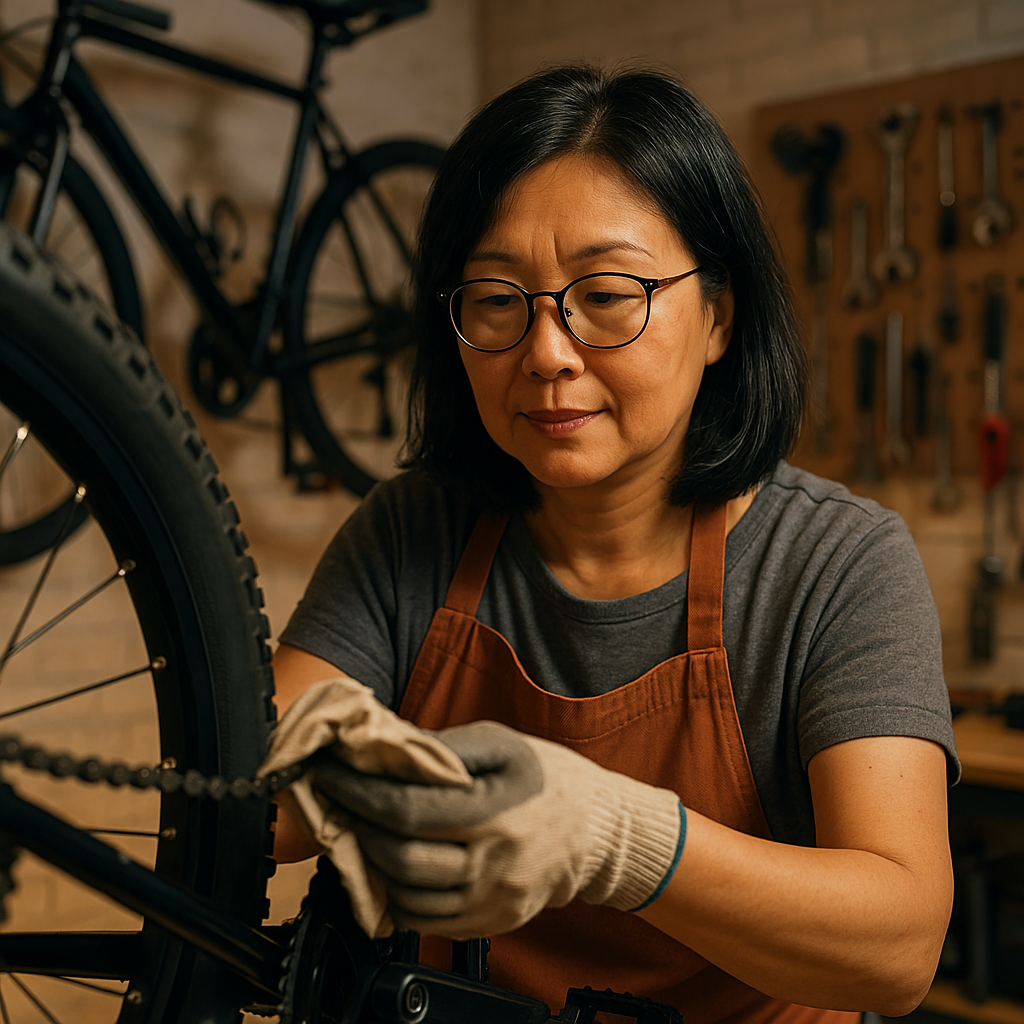
Clean and lubricate your chain every 2-3 weeks in dry conditions, more frequently in wet or dusty environments. Apply lubricant to a clean chain, allow it to penetrate the links, then wipe excess from the outer plates to prevent dirt accumulation.
Despite meticulous maintenance, roadside mechanical issues occasionally arise. A basic repair kit stored permanently on your bike provides tremendous peace of mind: multi-tool with common hex sizes, tire levers, spare inner tube, compact pump or CO2 inflator, and self-adhesive patches. Consider adding a quick link for your specific chain type and a small section of duct tape wrapped around your seat post or pump for improvised repairs.
While comprehensive mechanical knowledge isn't required for successful commuting, understanding a few fundamental repairs saves significant hassle. Practice changing an inner tube at home before needing to perform this operation roadside. Learn simple derailleur adjustments for shifting problems and basic brake pad maintenance to maintain stopping power.
For those mechanical issues beyond your skill level, cultivate a relationship with a reliable local bike shop. Professional tune-ups twice yearly (typically spring and fall) help address wear before it becomes problematic while supporting businesses that sustain cycling infrastructure in your community.
Securing your bike: theft prevention strategies
Bike security concerns rank among the top barriers to regular commuting. Implementing a comprehensive approach to theft prevention allows peace of mind while your bicycle waits for your return.
Lock quality forms the foundation of physical security.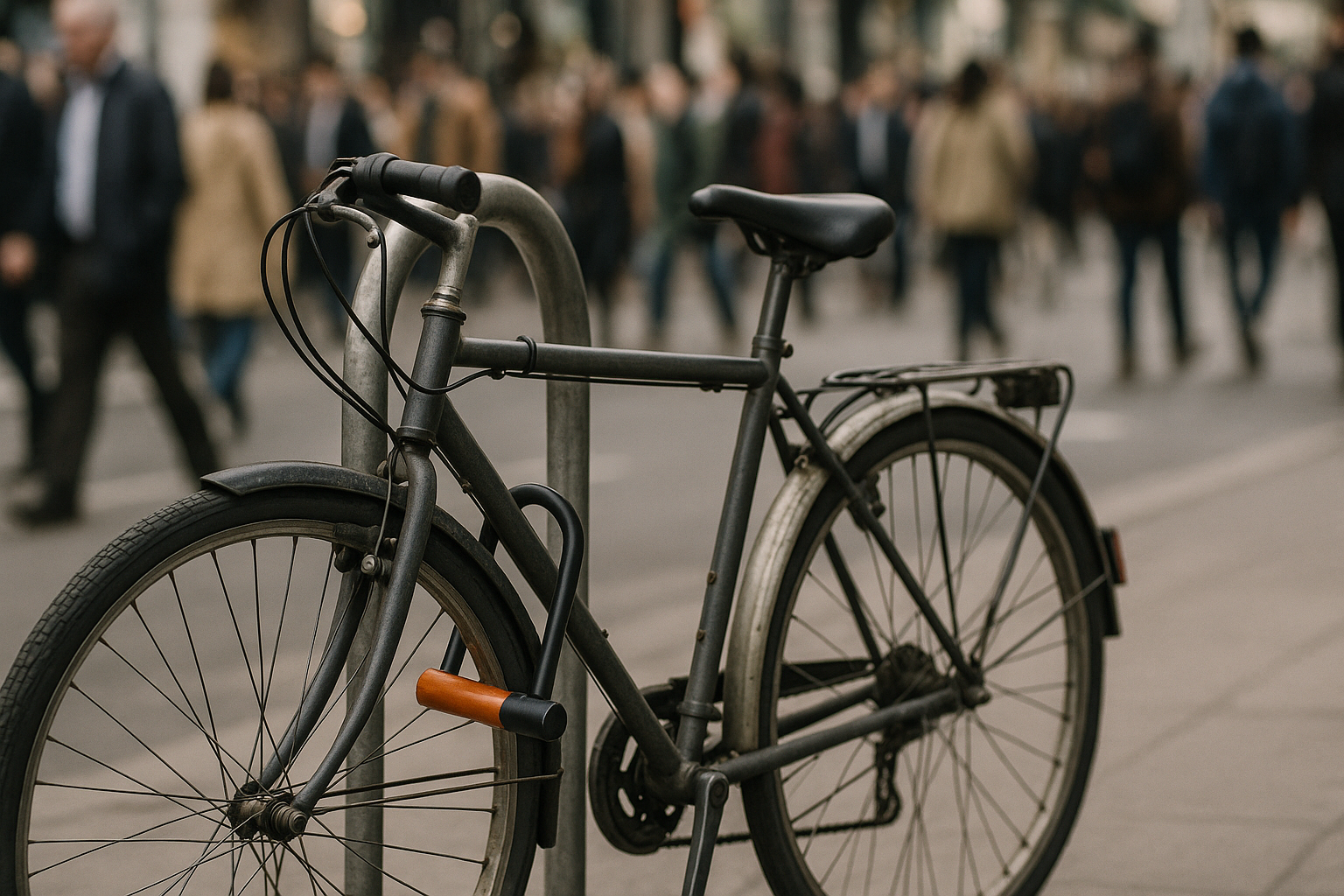
U-locks provide excellent resistance against common theft tools when properly sized (smaller is actually better, as it limits leverage opportunities). Chain locks offer flexibility for securing around larger fixed objects, while folding locks balance security and portability. Avoid cable locks as primary security—they rarely withstand more than a few seconds against bolt cutters.
Proper locking technique matters as much as lock quality. Always secure the frame and at least one wheel to an immovable object, preferably in a well-lit, high-traffic area with video surveillance if available. Position the lock keyhole facing downward to make manipulation more difficult, and ensure the lock doesn't rest on the ground where it becomes vulnerable to sledgehammer attacks.
Consider the "ugly bike" strategy for daily commuting—a functional but visually unassuming bicycle attracts less criminal attention than flashy models. Remove quick-release components when parking, including seats and wheels if they're not secured by the primary lock. For longer-term parking, hidden AirTag mounts for cycling theft prevention offer tracking capability should physical security be defeated.
Registration with programs like Bike Index or 529 Garage creates a verifiable ownership record and helps recovery if theft occurs. Photograph your bike from multiple angles, documenting unique features and the serial number (typically found under the bottom bracket). Consider etching or applying a less-removable identifier in a discrete location as additional proof of ownership.
Insurance provides a financial safety net when physical security fails. Homeowner's or renter's policies sometimes cover bicycles, though often with high deductibles and limited protection outside your residence. Dedicated bicycle insurance offers more comprehensive coverage including roadside assistance, liability protection, and replacement for current market value rather than depreciated worth.
Maximizing comfort & fun on your commute
The daily commute represents a significant time investment—transforming it from obligation into enjoyment creates sustainable motivation for continued cycling.
Route variety prevents monotony while revealing new aspects of your community. Create several alternates for your regular commute, perhaps including a "scenic" option for days when time permits and a "direct" version for tighter schedules. Weekend exploration rides often uncover hidden connections, quiet neighborhoods, or parkland corridors that become welcome additions to weekday routes.
Comfort modifications make substantial differences in riding enjoyment. Contact points—where your body meets the bicycle—deserve particular attention. A quality saddle properly adjusted for your anatomy prevents discomfort that might otherwise discourage regular riding. Ergonomic grips reduce hand numbness on longer commutes, while properly positioned brake levers minimize wrist strain.
Consider your commute an opportunity rather than an obligation. Many riders use this time for mindfulness practice, observing seasonal changes along their route or simply enjoying the sensory experience of movement. Others approach commuting as structured exercise, perhaps incorporating interval training on certain segments or gradually increasing pace to build fitness.
Social connections enhance motivation and safety.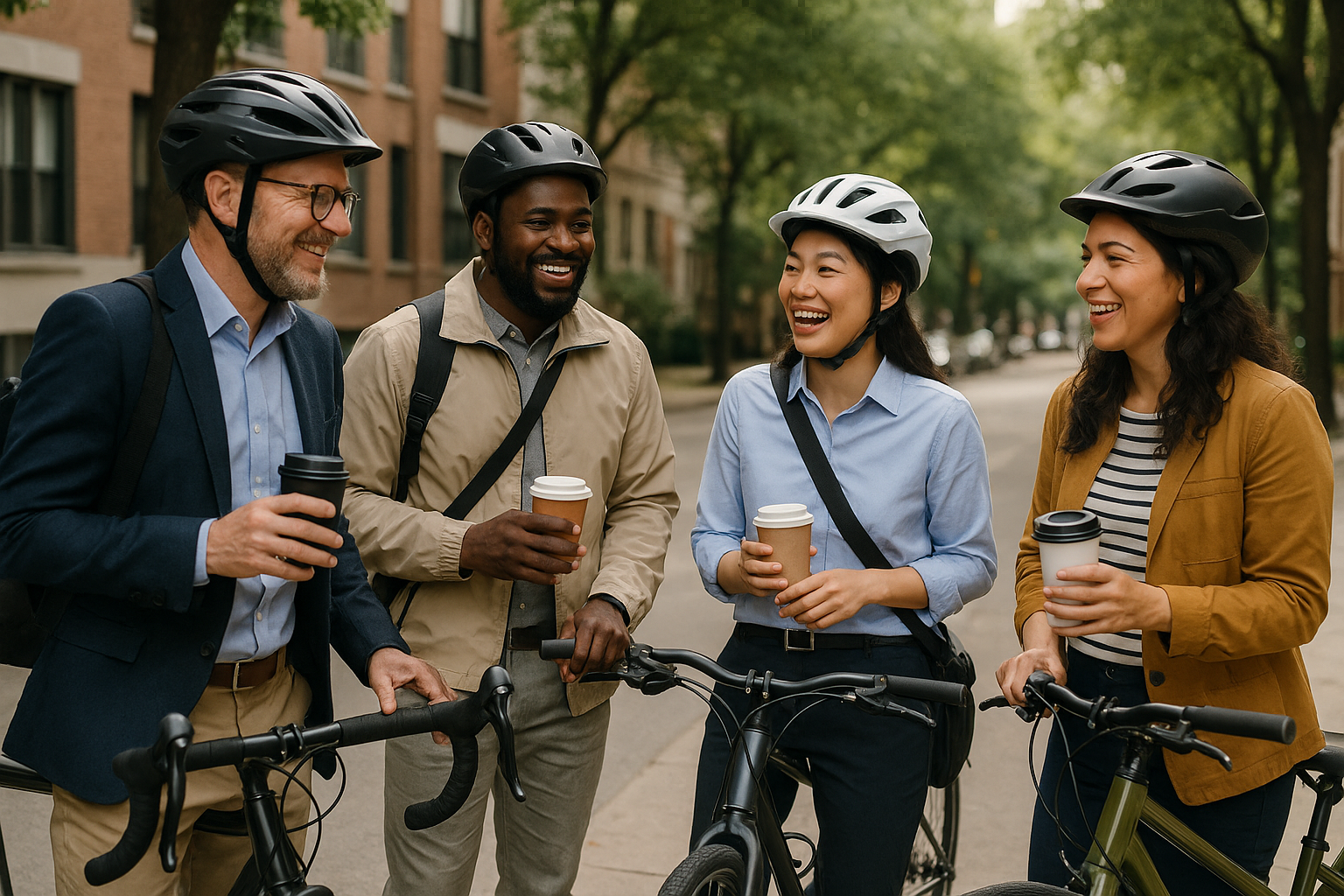
Seek out established "bike bus" groups that ride common routes together at scheduled times, or coordinate with colleagues for companionship and increased visibility. Many cities offer cycling clubs with regular recreational rides that build skills applicable to daily commuting while expanding your cycling community.
Thoughtful accessories elevate the commuting experience. A handlebar bag provides convenient access to snacks or your phone without dismounting. Quality front and rear lights with extended battery life eliminate anxiety about darkening evenings. Fenders prevent the dreaded "skunk stripe" of road grime up your back during wet conditions. Small upgrades like a better bell, a more comfortable saddle, or ergonomic grips often provide outsized improvements in daily satisfaction.
Weather adaptation extends your riding season dramatically. Rather than viewing rain or cold as barriers, approach them as challenges to solve through appropriate equipment and technique. With proper clothing and fenders, wet weather riding becomes manageable and occasionally wonderful—revealing different urban rhythms and less crowded pathways.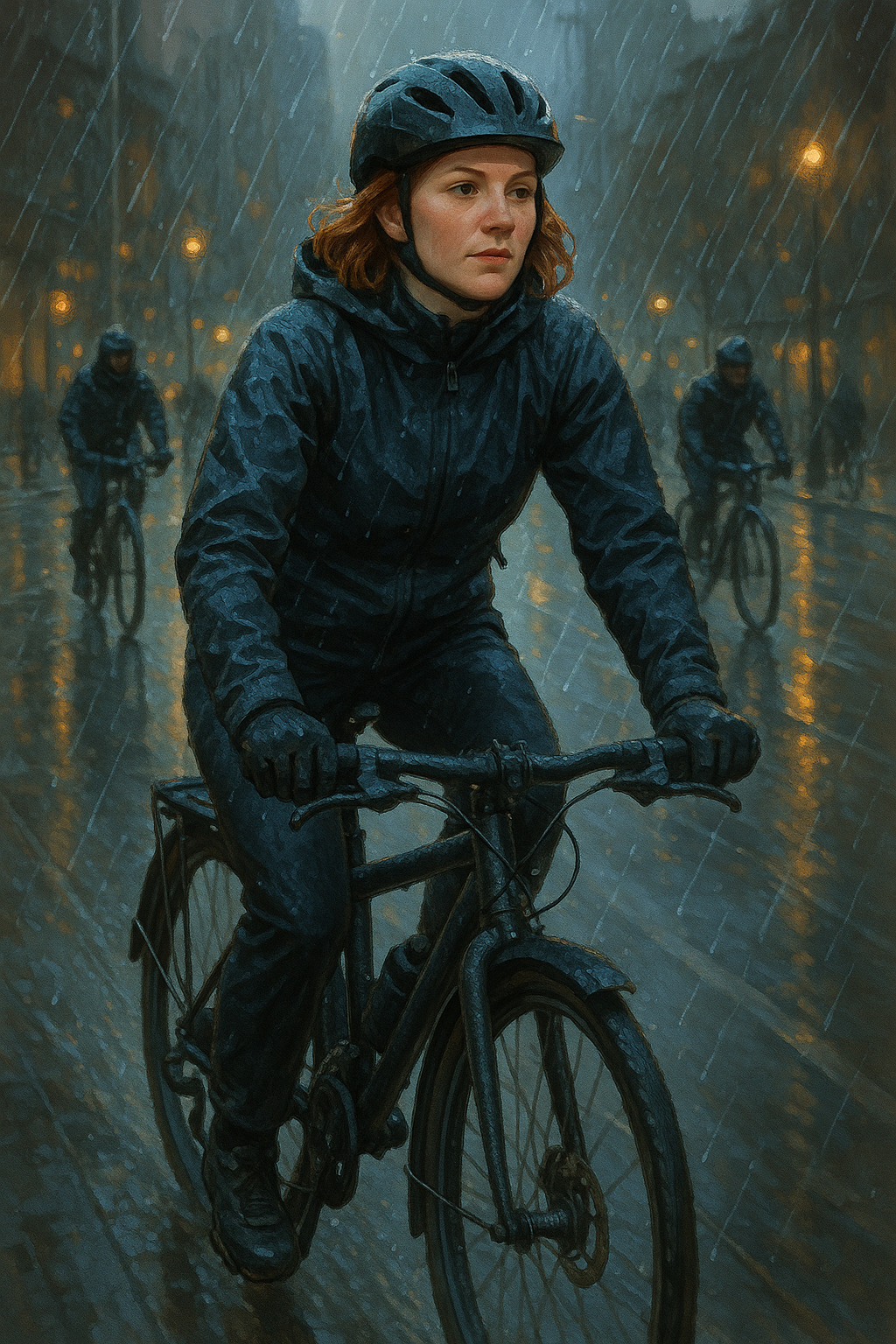
Cold weather cycling requires layering strategies and extremity protection but rewards with invigorating rides when fair-weather cyclists have retreated indoors.
Conclusion
Bike commuting represents one of the rare life changes that simultaneously benefits your personal health, financial wellbeing, and environmental impact. The transition requires some initial investment—both in equipment and establishing new routines—but the rewards compound daily through improved fitness, reduced transportation costs, and the simple joy of self-powered movement.
Start where you are, with the equipment you have, and build incrementally. Perhaps begin with once-weekly rides during favorable conditions, gradually expanding as your confidence and capabilities grow. Remember that perfect conditions rarely exist—embracing the adaptability that cycling requires often transfers valuable resilience to other life areas.
The bicycle's elegant simplicity transforms urban transportation from isolation to engagement, from passive observation to active participation in your community. Whether you're embarking on your first commuting journey or refining an established routine, each pedal stroke represents both practical transportation and a small act of independence—a declaration that how we travel matters as much as reaching our destination.
Your commuting evolution will involve some trial and error, but the cycling community offers abundant support through local bike shops, online forums, and fellow riders. The path to sustainable, enjoyable bike commuting isn't always straight, but it consistently leads toward greater personal satisfaction and connection to your surroundings. Your morning commute awaits transformation from mundane necessity to daily adventure—you need only grasp the handlebars and begin.
Frequently asked questions
What is the safest way to lock my bike at work?
Always lock the frame and at least one wheel to a secure, immovable object with a high-quality U-lock or chain. Remove or lock accessories, and use GPS or AirTag mounts for added protection.
What should I do if my bike gets a flat tire during my commute?
Carry a repair kit (spare tube, tire levers, mini-pump, and multi-tool). If you experience a flat, find a safe place, remove the wheel, replace or patch the tube, and re-inflate. Practice this at home to prepare.
How can I make my bike commute more enjoyable?
Vary your route for interest, ride with friends or groups when possible, listen to the environment (not headphones), and reward yourself with a post-ride treat or scenic detour.
Are e-bikes a good option for commuting?
Yes, e-bikes are ideal for longer, hilly, or sweat-averse commutes. Modern e-bikes offer pedal assist, increased safety features, and the same health and environmental benefits as traditional bikes.
What gear should I always carry when commuting by bike?
Essentials include a helmet, front and rear lights, reflective gear, lock, multi-tool, spare tube, pump, ID, and hydration.
